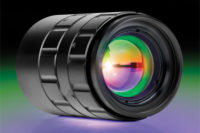Ease of use and processing power have also dramatically improved. Previously, manufacturers did not want to roll out their own vision system. "Now the smart camera basically is the vision system," Singleton says. "It's easier to implement, especially for application-specific solutions." With these ready-to-go systems, the use of vision is more widespread. In many vision applications, "You don't have to have an automation engineer, vision guru or systems integrator," says Singleton, who maintains that there will always be a need for integrators in complicated implementations. Now systems are usually set up so the typical manufacturing person can implement vision-they know the process, what needs to be done and what the vision system has to interface to.
Now companies are introducing neural network technology-self-learning systems that are specifically tailored to target particular tasks. "It's been hyped for years, but they didn't really work," Singleton says. "In the past, general purpose systems didn't really know what needed to be done." Companies would pay a lot for the system and wanted it to handle many different tasks. For example, they would try to bundle assembly verification and color inspection together, which didn't work. Now companies focus on specific applications.
With price dropping dramatically, along with easier-to-use products, there has been an increase in the number of people able to use machine vision systems, Singleton says. Previously large operations would use vision because it was essential to their operation. Now even mom-and-pop label manufacturing shops, for example, can get a vision appliance dedicated to label inspection, without hiring a new employee.
Vision systems are doing a lot more-improving algorithms, increasing processing power for color processing, texture analysis, and combining 2-D and 3-D. Singleton predicts more widespread use of 3-D vision, and 3-D smart cameras in particular. He also forecasts more applications being addressed that involve X-ray or infrared imaging, and more companies providing integrated vision and motion solutions. V&S
vision trends
• In terms of software, well-designed GUIs are making software easier to set up and use.• Ongoing developments in the PC arena-faster processors, faster busses, migration to 64-bit processing, multiprocessor systems, dual core systems and new connectivity standards-continue to increase the PC's appeal as an implementation platform for vision solutions.
• Camera models with CMOS (complimentary metal-oxide semiconductor) sensors will continue to take market share from those that use CCD sensors. Widely used in consumer products such as imaging-capable cell phones, the properties and performance of CMOS sensors will steadily improve-resulting in lower cost cameras suitable for use in addressing increasingly more vision applications.

